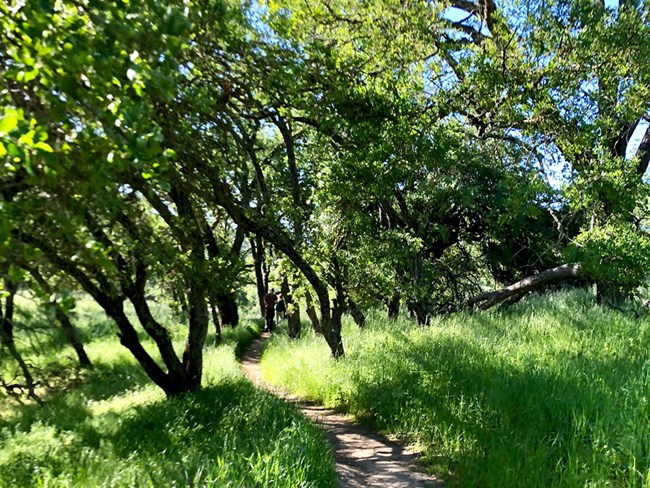
NPS Vegetation CommunitiesHiking through Mt. Wanda, you may notice an array of oaks, shrubs and grasses. These plants are part of the diverse vegetation communities—groups of plants with common features—that make up the rich landscape of the site. These communities provide a variety of benefits to the environment. For example, while the complex root systems reinforce soil and reduce erosion, the vegetation above the ground act as natural air purifiers and can reduce pollutants. The vegetation communities on Mt. Wanda include: Oak woodlandsA woodland is defined by the low-density of tree cover that allows plenty of light to make its way to the understory, which can include shrubs and grasses. Of the 632 native amphibians, reptiles, birds and mammals in California, over 300 species call oak woodlands home, many of which are threatened or endangered. Black oak, coast live oak, and blue oak are the three main oak species found on Mt. Wanda. ShrublandsOften referred to as chaparral (chaparro is Spanish for “short”), Shrublands, consist mostly of short woody shrubs. Although this community is less common than others on Mt. Wanda, it vital in supporting wildlife, including some rare and threatened species. Shrublands are commonly drought-tolerant and are characteristic of the Mediterranean climate regions found along the central and southern coastal regions of California. 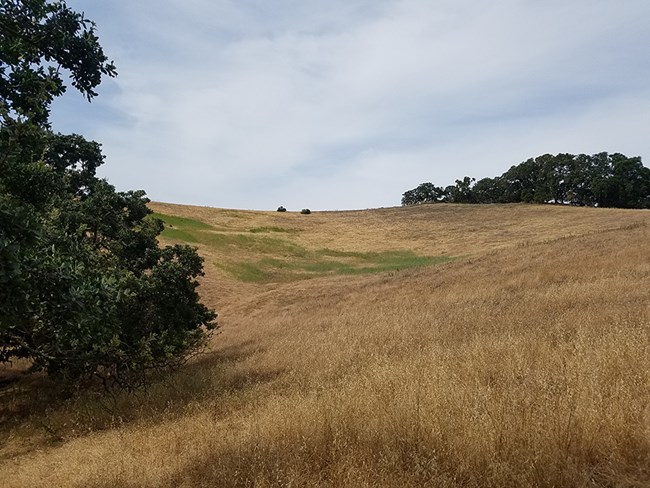
NPS GrasslandsGrass is the main feature in this vegetation community, with occasional trees and shrubs. Although most grasslands on Mt. Wanda are dominated by introduced grasses, such as wild oats, park staff are working to restore native grass species. Learn more on the invasive plants page. ForestsForests have dense tree canopies that shade much of the ground underneath, making the understory limited to mostly shade-tolerant plants . There are a few kinds of forests on Mt. Wanda, each one with specific trees that make up the canopy. On Mt. Wanda, most common kinds of forests are coast live oak forest, olive forest, and California laurel forest. Native PlantsContra Costa County is filled with wonderful plant species, many of which are unique to the area. In the spring, wildflowers bring a shower of color to the rolling green hills. In the fall, oak acorns and buckeye seeds hint at the arrival of cooler weather. Below are some common plant species you might spot while hiking on Mt. Wanda or in other natural open spaces in the area. Oak treesOak trees can be found all over the United States, and can live well over 200 years. Oak trees have been used for thousands of years by people--properly prepared, acorns make a nutritious meal, and the hardwood makes useful tools and strong building material. The oak family has hundreds of species in it, but the ones most commonly found on Mt. Wanda are coast live oak, blue oak, valley oak, black oak, and Oregon white oak. California buckeye (Aesculus californica)The large, circular, brown fruit of the buckeye tree develops in fall and winter, after leaves have fallen from the tree. Native American tribes of the area treated snakebites using a poultice made from its bark. 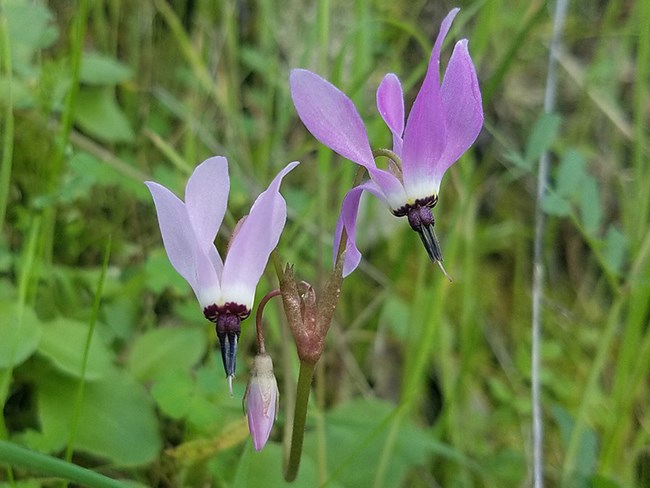
NPS Shooting star (Dodecatheon hendersonii)The lavender, white, or magenta petals of the shooting star bend sharply backward towards a maroon, leafless stem. They bloom from February through April, and can be found growing along trails on Mt. Wanda. Common fiddleneck (Amsinckia menziesii var. intermedia)Honeybees and butterflies love the yellow-orange fiddleneck flowers that bloom from March to May. The slender flowers curl inward at the top of the stem, giving it the appearance of a fiddle’s neck. 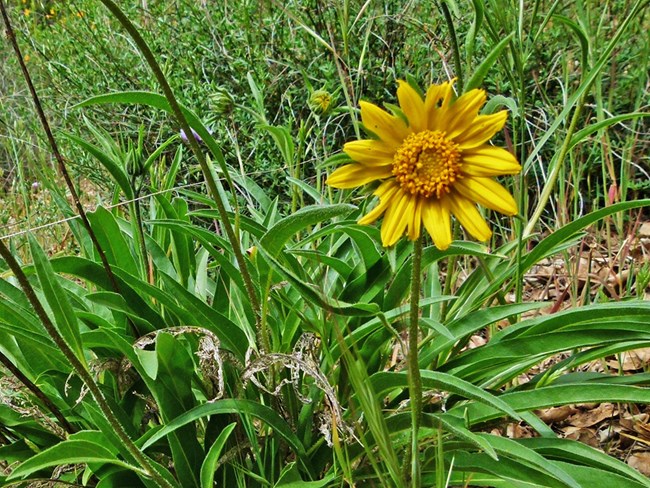
NPS Rare PlantsBelow are some rare native plant species that grow on Mt. Wanda. Some are endemic to California, meaning they don’t grow anywhere else in the world. Mt. Diablo sunflower (Helianthella castanea)This rare species has large, yellow flowers that shoot up on long stems from a cluster of leaves. It’s named after Mt. Diablo because so far it has only been found in Mt. Diablo State Park, and other hills in the San Francisco Bay Area. California black walnut (Juglans californica var. hindsii)This tree can grow to be sixty feet tall and produces a smooth, edible brown nut that is enjoyed by wildlife and people. It’s rough, grayish bark has been used by California Indians for centuries. For example, the Chumash use it for making baskets. This tree is also endemic to California, and acts as a nesting place for many birds. Black walnuts are threatened by urban development, overgrazing cattle, and other human activities. 
NPS Heart leaf milkweed (Asclepias cordifolia)This plant grows up to two feet two feet tall and has small, red-purple flowers that bloom in spring and summer. It and gets its name from the large, heart-shaped leaves that grow opposite each other on its stem. Milkweed is an essential plant in the life cycle of the monarch butterfly—the butterflies exclusively lay their eggs on the underside of milkweed leaves, which their caterpillars eat. It native to the western United States, but there are now very few locations in the Bay Area where this plant still occurs in the wild. 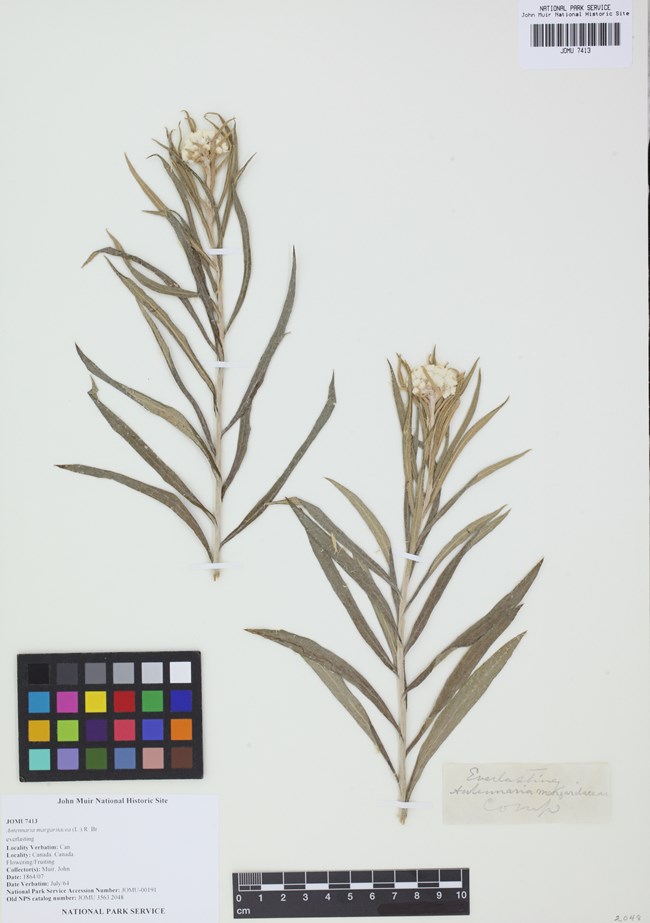
NPS John Muir's Historic HerbariumIncluded in the John Muir National Historic Site museum collections are historic herbarium specimens collected by John Muir on his travels to Canada and Indiana (1864-1867) and his world tour to Australia, New Zealand, China, Japan, Hawaii, the western United States, Florida, Scotland, and South America (1903-1904).
In 2016, John Muir National Historic Site worked in partnership with the University and Jepson Herbaria at the University of California, Berkeley, through a Cooperative Ecosystem Study Unit (CESU) agreement, to document and conserve Muir's historic herbarium using professional archival preservation and digitization techniques. The specimens are available for viewing on the University and Jepson Herbaria website at the link below. Use This Highlighted Link and Instructions Search | CollectionSpace (berkeley.edu) 1) enter JOMU* in the Specimen ID field 2) Display Options to “FULL” to see list with photos 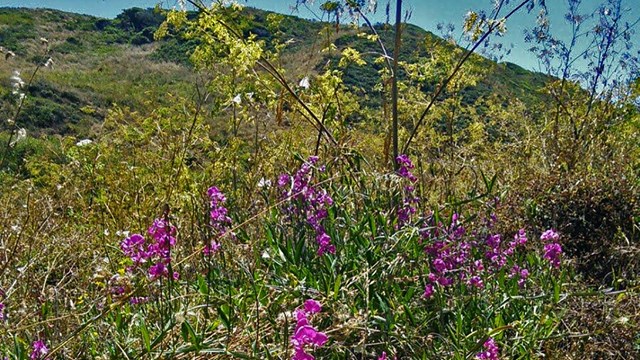
Invasive Plants
Invasive plants display qualities like fast growth, high seed production, and rapid maturation that allow them to displace native species. 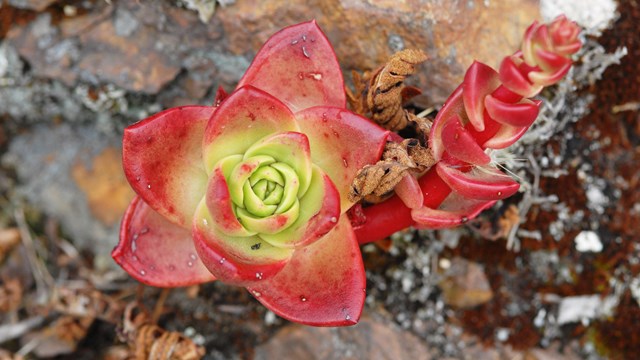
Plants in the San Francisco Bay Area
Learn more about the diverse plants and plant communities around the Bay Area from the Pacific Coast Science & Learning Center website. Quick Reads |
Last updated: November 9, 2023
